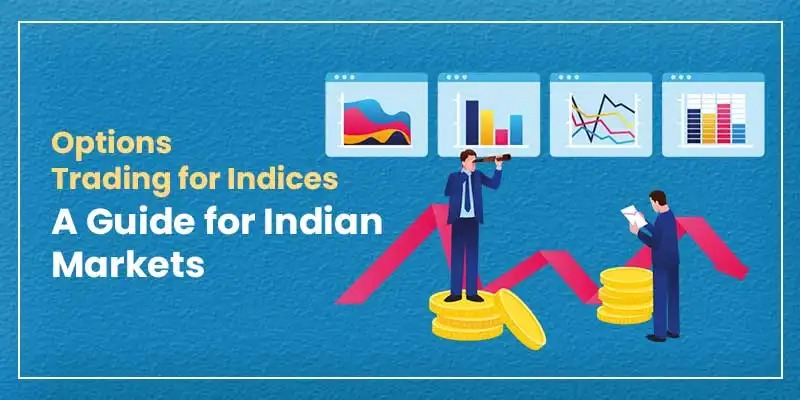Index options trading has gained interest among traders in India. These derivative instruments allow market participants to speculate on or hedge against index movements. This article explores the fundamentals of index options, key concepts, and commonly used strategies in the Indian markets.
Contents
- Understanding Options Trading
- Key Concepts in Index Options
- How Options Trading Works on Indian Indices
- Trading Strategies for Index Options
- Considerations When Trading Index Options
- Conclusion
- FAQs
Understanding Options Trading
Options are financial contracts that give the buyer the right, but not the obligation, to buy or sell an underlying asset at a set price within a set time frame. The two main types are:
- Call Options: You can buy the underlying index with these.
- Put Options: You can sell the underlying index with these.
In index trading, these contracts derive their value from market indices such as Nifty 50 or Sensex, rather than individual stocks.
Read Also: Key Approaches For Options Trading In 2025
Key Concepts in Index Options
The following are some of the key factors influencing index options trading:
- Premium: The amount paid by the buyer to the seller for the option. It is influenced by factors such as the index price, volatility, time to expiration, and market sentiment.
- Strike Price and Expiry Date: The strike price is the pre-determined level at which the option can be exercised, while the expiry date marks the last day the contract is valid.
- Intrinsic and Time Value: Intrinsic value reflects the option’s real worth based on the index’s current level relative to the strike price, while time value represents the additional premium due to the remaining duration before expiry. It may still be worth buying an option even if it isn’t profitable right now because of its time value.
How Options Trading Works on Indian Indices
In India, index options are traded on regulated exchanges such as the National Stock Exchange (NSE). These instruments allow traders to hedge existing positions or speculate on market trends without owning the underlying index. Here’s how the trading process works:
- Market Analysis: Traders assess economic indicators, global trends, and technical patterns to form a market outlook.
- Selecting an Option: Based on their analysis, traders choose between call or put options. For example, a bullish trader may buy a call option.
- Managing Positions: Traders may close positions before expiry to manage risk and lock in gains, depending on market movements.
Trading Strategies for Index Options
In trading index options, traders employ various strategies based on market conditions and risk tolerance, including.
- Covered Call: Involves holding a position in the underlying index while selling call options to generate additional income.
- Protective Put: Investors buy put options to hedge against potential declines in their index holdings.
- Straddle and Strangle: These neutral strategies involve buying both call and put options when significant market movement is expected but without a directional bias. A straddle uses the same strike price for both, while a strangle involves different strike prices.
Considerations When Trading Index Options
Traders should consider the following factors when engaging in index options trading:
- Volatility Levels: Since volatility directly influences option prices, monitoring market conditions is essential.
- Liquidity: High liquidity in index options ensures efficient execution and tighter bid-ask spreads.
- Time Decay: As expiration approaches, options lose time value, making timing a crucial factor in decision-making.
Read Also: How To Start Trading Options: A Step-By-Step Guide
Conclusion
Index options trading in India provides market participants with tools for speculation and hedging. Understanding the fundamentals of options, pricing factors, and strategic approaches can help traders make informed decisions. Effective risk management and a disciplined trading plan are essential for navigating market fluctuations successfully.
Disclaimer: Investments in the securities market are subject to market risks; read all the related documents carefully before investing.
FAQs
Index options in India typically follow monthly expiration cycles, with some indices also offering weekly expirations for enhanced flexibility.
Yes, index options can be used for hedging against volatility. Protective puts, for example, allow investors to mitigate downside risk in uncertain market conditions.
Tax treatment of index options trading in India varies based on the holding period and nature of transactions. Consulting a tax professional is advisable for updated tax regulations.

